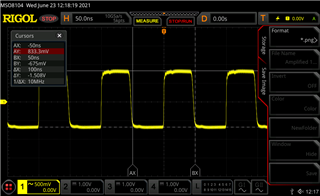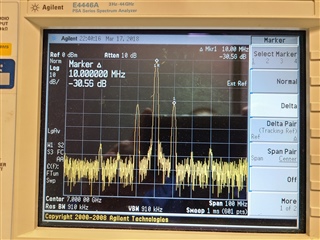I am using the LMX2594 in integer mode with a 10MHz reference using the OSC_2X function to achieve a 20MHz PFD. I have an amplifier for the 10MHz reference preceding the LMX2594 reference input that does a good job of increasing the slew rate and squaring up the signal, however the duty cycle is not exactly 50%, it is closer to 47%, waveform picture attached of amplified 10MHz reference. What effects can I expect to see from this non-50% duty cycle reference using the OSC_2X function?






